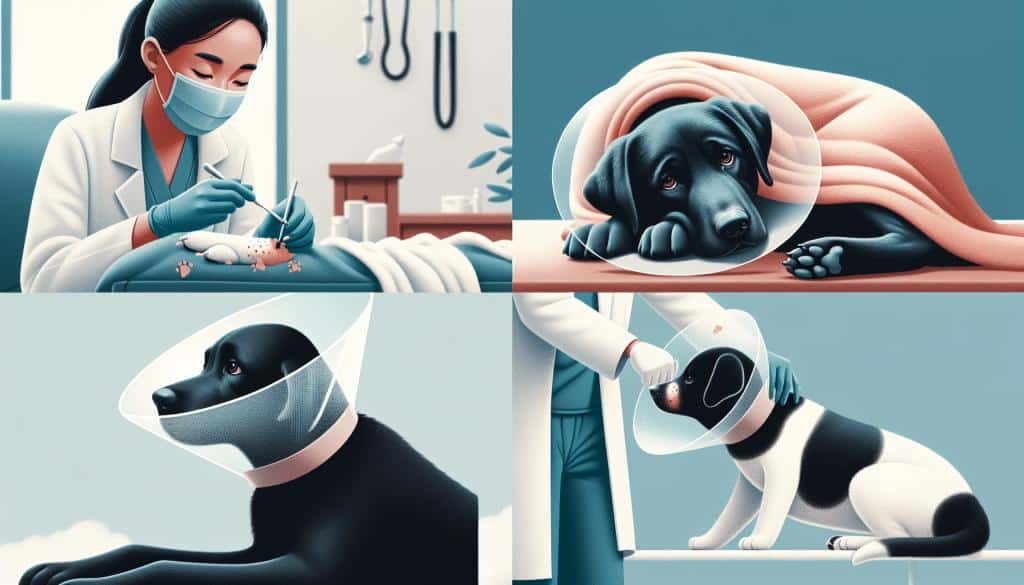Imagine being thrust into a secretive world, filled with danger and deception, where animals are commodified and sold as mere objects. In “Undercover in the Exotic Pet Trade,” you find yourself at the forefront of a covert operation aimed at unraveling the underbelly of this often overlooked and misunderstood industry. As you navigate through hidden markets and shadowy conversations, you will come face to face with the harsh reality of the exotic pet trade and the urgent need for change.

Understanding the Exotic Pet Trade
Defining ‘Exotic Pets’
The term ‘exotic pets’ refers to non-native animals that are kept as pets. These animals can include reptiles, amphibians, birds, mammals, and even invertebrates. Unlike traditional pets such as cats or dogs, exotic pets are often rare or uncommon species, which adds to their appeal. However, it is important to note that the exotic pet trade poses many ethical and ecological concerns.
Overview of the Global Exotic Pet Trade
The global exotic pet trade is a multi-billion-dollar industry that spans across continents. Animals are captured from their natural habitats or bred in captivity and then traded internationally for use as exotic pets. The demand for these animals comes from a variety of sources, including collectors, hobbyists, and individuals seeking unique pets.
Legal vs. Illegal Trade
There exist both legal and illegal aspects to the exotic pet trade. While some countries have regulations and permits in place to control the trade, others lack comprehensive legislation, making it easier for illegal activities to occur. The legal trade operates under specific guidelines, ensuring that animals are obtained and transported in a humane and sustainable manner. Unfortunately, the illegal trade often involves smuggling, which can lead to immense suffering for the animals involved.
Common Species in the Exotic Pet Market
Certain species have become highly sought after in the exotic pet market. Reptiles such as turtles, snakes, and lizards are especially popular due to their unique appearance and perceived ease of care. Birds, including parrots and macaws, are also frequently traded. Mammals like monkeys, sugar gliders, and even big cats can be found in this market. These animals are often taken from the wild or bred in captivity, a process that can have detrimental effects on their well-being and conservation status.
The Undercover Operation
Objectives and Goals
Undercover operations in the exotic pet trade aim to gather evidence and expose illegal activities. The primary objective is to identify and apprehend individuals involved in the smuggling, trading, or mistreatment of exotic animals. These operations seek to protect wildlife, promote animal welfare, and enforce existing laws.
Planning and Preparation
Before launching an undercover operation, meticulous planning is required. This includes gathering intelligence on key players, understanding the network’s structure, and analyzing trade routes. It is essential to collaborate with local law enforcement agencies and conservation organizations to ensure a successful operation.
Establishing a Cover Identity
To infiltrate the exotic pet network, undercover agents must establish a credible cover identity. This often involves posing as potential buyers or traders, gaining the trust of those involved in the trade. Building and maintaining relationships within the network is crucial for gathering crucial evidence.
Infiltrating the Exotic Pet Network
Once an undercover agent establishes their cover identity, they can start gathering information and evidence. This may involve attending trade shows, meeting with suppliers, or participating in online forums. By gaining the trust of those involved in the trade, undercover agents can observe illegal activities firsthand and gather sufficient evidence for legal intervention.

The Dark Reality of the Trade
Documents of Animal Abuse
Undercover investigations have revealed shocking instances of animal abuse within the exotic pet trade. Animals are often subjected to severe mistreatment during captivity, transportation, and even sale. These activities include overcrowding, malnutrition, physical abuse, and neglect. The undercover work helps shed light on these practices and brings perpetrators to justice.
Capturing Techniques and Its Impact on Wildlife
The methods used to capture animals for the pet trade often involve extreme cruelty. In many cases, animals are torn away from their natural habitats, disrupting ecosystems and decimating populations. Poaching and illegal trade contribute to the decline of endangered species and threaten biodiversity.
Mortality Rates During Capture and Transport
The capture and transportation process for exotic animals is highly stressful and dangerous. Mortality rates during these stages are alarmingly high, with many animals perishing before ever reaching their intended destinations. The undercover work exposes the harsh conditions that animals endure, emphasizing the need for stricter regulations and enforcement.
Health Issues for Animals in the Pet Trade
Animals involved in the exotic pet trade often suffer from various health issues. Stress, improper care, and unsuitable environments can lead to diseases, physical deformities, and shortened lifespans. Unscrupulous traders may also administer illegal drugs or perform harmful procedures to manipulate an animal’s appearance or behavior, further endangering their well-being.
Legal Framework and Enforcement
International Laws and Regulations
Several international agreements and conventions address the exotic pet trade. The Convention on International Trade in Endangered Species of Wild Fauna and Flora (CITES) represents a crucial framework to regulate the international trade of endangered species. However, the enforcement and implementation of these laws vary across countries and regions.
Shortcomings of Legislation
While legal frameworks exist, there are significant shortcomings in their implementation. Limited resources, corruption, and inadequate penalties make it difficult to effectively enforce regulations. Furthermore, the legal trade often fails to adequately address the welfare and conservation concerns associated with the exotic pet trade.
Role of Enforcement Agencies
Enforcement agencies play a vital role in combating the illegal exotic pet trade. These agencies work in collaboration with international organizations, local authorities, and wildlife conservation groups to investigate and prosecute offenders. Strengthening the capacity and resources of these agencies is essential to curb illegal activities.
Challenges in Law Implementation
Implementing and enforcing laws related to the exotic pet trade pose numerous challenges. The transnational nature of the trade, porous borders, and elusive criminals make it challenging for law enforcement agencies to apprehend and prosecute offenders. Overcoming these hurdles requires international cooperation, dedicated resources, and ongoing efforts to raise awareness.

International and Domestic Markets
Key Regions for Exotic Pet Trade
The exotic pet trade is prevalent in various regions around the world. Southeast Asia, including countries like Thailand and Indonesia, remains a hotspot for the trade due to its rich biodiversity. Central and South America also contribute significantly to the global market. Additionally, North America, Europe, and the Middle East are major consumer regions.
Online Trade and Social Media’s Role
With the rise of technology, the exotic pet trade has found a new platform through online marketplaces and social media. These platforms provide easy access for traders and buyers, facilitating the illegal trade. Vigilance and regulation of online platforms are crucial in curbing the trade and holding offenders accountable.
Consumer Demand Dynamics
Consumer demand drives the exotic pet trade. While some individuals may be genuinely interested in caring for these animals, others buy them for social status or the thrill of owning something unique. Understanding the psychology behind consumer demand is key to implementing effective education and awareness campaigns.
Profile of Exotic Pet Owners
Exotic pet owners come from diverse backgrounds and have varying motivations for acquiring these animals. Some owners may be genuinely passionate about conservation and animal welfare, ensuring the highest standards of care for their pets. However, the trade also attracts individuals looking to showcase exotic animals as trophies or status symbols. Educating pet owners about the ethical and environmental implications of the trade is crucial in shaping responsible ownership.
Animal Welfare and Rights
Ethical Considerations
The exotic pet trade raises numerous ethical concerns. In many cases, animals suffer greatly due to inadequate care, confinement, and the trauma of being separated from their natural habitats. Their lives can be drastically shortened, and their well-being compromised for the sake of human fascination or profit. Recognizing the inherent value of all animals and their right to live free from harm is at the core of ethical considerations.
Animal Welfare Organizations’ Stance
Animal welfare organizations worldwide take a strong stance against the exotic pet trade. These organizations advocate for stricter regulations, enforcement of existing laws, and education to promote responsible pet ownership. They also work towards protecting wildlife and rehabilitating animals rescued from the trade.
Rehabilitation of Rescued Exotic Animals
Rescuing and rehabilitating animals that have been confiscated from the exotic pet trade is a key focus for many organizations. The physical and psychological rehabilitation process aims to restore the animals to their natural behaviors and, when possible, reintroduce them to their native habitats. Such efforts give these animals a chance at a fulfilling life after their traumatic experience in captivity.
Educating the Public on Animal Rights
Education plays a critical role in addressing the exotic pet trade. It is essential to raise awareness about the ethical implications, the impact on biodiversity, and the welfare of animals involved. Encouraging individuals to consider alternative ways of appreciating wildlife and promoting sustainable behaviors helps cultivate a society where animal rights are respected.
Undercover Discoveries
Illegal Breeding Facilities
Undercover operations have exposed the existence of illegal breeding facilities for exotic animals. These facilities cater to the demand by producing large numbers of animals for the pet trade, often in deplorable conditions. Investigations have revealed cramped spaces, lack of proper nutrition and medical care, and a disregard for the animals’ welfare.
Trade Routes and Smuggling Methods
By infiltrating the exotic pet network, undercover agents gain insight into the trade routes and smuggling methods employed by criminals. These trade routes can cross borders and involve complex networks of individuals and organizations. Understanding these patterns is vital for implementing effective strategies to curb smuggling and hold criminals accountable.
Role of Corruption and Bribery
Corruption and bribery often facilitate the illegal exotic pet trade. Undercover investigations have uncovered instances where law enforcement officials and government officials are compromised, allowing criminals to continue their operations undetected. Addressing corruption is crucial in dismantling the networks that perpetuate the trade.
Impact on Local Ecosystems
The exotic pet trade has significant implications for local ecosystems. Removing animals from their natural habitats disrupts ecological balance, affecting prey-predator relationships and biodiversity. Invasive species, escaping from captivity or intentional release, can devastate native flora and fauna, leading to irreversible damage.
Risks and Challenges of Being Undercover
Personal Safety Concerns
Undercover work in the exotic pet trade presents inherent risks to undercover agents. The criminal networks involved are often dangerous and well-connected, posing threats to the safety and well-being of those working undercover. Adequate support, training, and security measures are vital to ensuring the safety of agents throughout the operation.
Psychological Impact of Undercover Work
Undercover work in the exotic pet trade can have a significant psychological impact on agents. Witnessing animal abuse, smuggling, and other illegal activities takes a toll on mental health. Post-traumatic stress disorder (PTSD), anxiety, and depression are common issues that undercover agents may face, warranting effective psychological support and debriefing.
Building Trust Within the Trade Circles
Building trust within the exotic pet trade circles is crucial for an undercover operation’s success. Earning the trust of traders and suppliers allows agents to gather valuable intelligence and evidence. However, the process of gaining trust can be time-consuming and requires careful negotiation.
Logistical Issues in Gathering Evidence
Gathering evidence in the exotic pet trade presents unique logistical challenges. Covert surveillance, maintaining communication in securitized environments, and documenting illegal activities without arousing suspicion are all complex tasks. Sophisticated planning and cutting-edge technology are necessary to overcome these challenges.
Conservation Impact
Species Endangerment and Extinction Risks
The exotic pet trade poses a significant threat to global biodiversity. By targeting rare and endangered species, the trade contributes to species endangerment and extinction risks. Animals kept as pets are often removed from their natural ecosystems, preventing their populations from recovering and thriving.
Conservation Efforts Undermined by the Pet Trade
Conservation efforts worldwide are undermined by the exotic pet trade. Investments in habitat restoration, species reintroduction programs, and community-based conservation initiatives are often offset by the continued demand for exotic pets. The trade perpetuates the exploitation of wildlife and distracts resources from vital conservation projects.
Restoration of Natural Habitats
Restoring natural habitats is a key aspect of conservation efforts impacted by the exotic pet trade. The extraction of animals for the pet trade often damages ecosystems, making restoration efforts essential. By rehabilitating and protecting natural habitats, conservationists can provide suitable conditions for wildlife populations to recover.
Successful Conservation Stories
Despite the challenges posed by the exotic pet trade, there have been successful conservation stories. Through diligent conservation strategies, concerted efforts by governments, and collaborations with local communities, some species have made remarkable recoveries. These success stories demonstrate the crucial role that conservation plays in preserving biodiversity.
The Path Forward
Strengthening International Collaboration
Addressing the exotic pet trade requires robust international collaboration. Cooperation between governments, law enforcement agencies, conservation organizations, and animal welfare groups is essential to combat the trade effectively. Sharing information, resources, and best practices can help facilitate a united front against illegal activities.
Education and Awareness Campaigns
Education and awareness campaigns are vital in changing public perceptions and behavior regarding exotic pets. Promoting responsible pet ownership, highlighting the ethical implications of the trade, and fostering empathy towards animals help create a society that respects both wild and domesticated creatures.
Encouraging Responsible Reporting
Responsible reporting by media outlets can play a significant role in exposing the dark realities of the exotic pet trade. By providing accurate information and highlighting the ethical concerns and legal implications, journalists can help shape public opinion and advocate for stronger measures to regulate the trade.
Policy Recommendations and Future Steps
Given the magnitude and complexity of the exotic pet trade, policymakers need to take proactive measures to address the issue. Strengthening legislation, increasing penalties for offenders, and improving enforcement mechanisms are some critical policy recommendations. Continued research, monitoring, and adaptation of strategies are essential in staying ahead of the ever-evolving exotic pet trade.
In conclusion, the exotic pet trade is a global industry with significant ethical, ecological, and conservation implications. Undercover operations play a crucial role in exposing illegal activities, shedding light on the mistreatment of animals, and advocating for stronger legislation and enforcement. Collaboration, education, and responsible reporting are instrumental in curbing the trade and protecting the welfare of exotic animals. By working together, we can strive towards a future where animals are respected, biodiversity is preserved, and the exotic pet trade is no longer a threat to our natural world.



